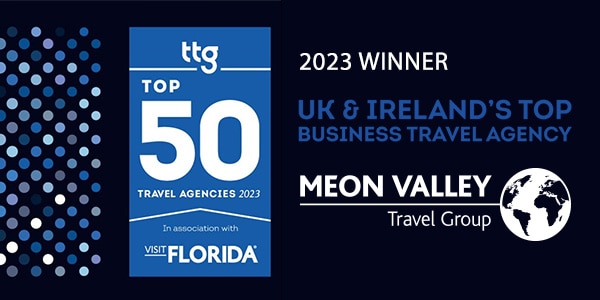Building upon our last article on the ROI of Business Travel, we’re focussing in on the value of face-to-face communication.
The rise in normalisation of video conferencing has undeniably transformed the way we conduct business. Being able to connect with colleagues and clients across continents with a single click is a powerful tool that has redefined remote work. However, despite its undeniable convenience, and efficiency, the virtual world can’t fully replicate the impact of in-person interactions. Meeting in person remains a cornerstone for building rapport, fostering collaboration and driving results.
We delve into the unequivocal benefits of face-to-face meetings and explore how they can empower your team and fuel your organisation’s success when deployed effectively with online collaborative tools with which we are all familiar. We’ll also address the realities of business travel and explore how the support of the right TMC, like Meon, can help you optimise your itineraries and ensure a smooth travel experience for your employees all within the parameters of your Travel Policy.
Building Rapport: The Foundation for Trust and Collaboration
The heart of any successful business relationship lies in its people. Building trust through video calls can be challenging. Non-verbal cues like body language, facial expressions, and subtle shifts in tone are often lost in translation. Face-to-face meetings, however, allow for a richer, more natural style of communication.

The intuitive ability people have to read body language provides valuable insights into their level of engagement, genuine interest, and receptiveness to your ideas. A shared moment of humour or recognition of a common challenge can forge a stronger connection than any emoji. These seemingly minor physical interactions create a sense of rapport that fosters a more open and collaborative environment.
Consider the initial stages of a new client relationship. Imagine how you would articulate the benefits of a strategic partnership through a video call compared to an in-person meeting. This physical presence allows for a more impactful presentation, fosters deeper understanding through nuanced communication, and allows for a natural flow of conversation that builds trust and confidence.
Fostering Collaboration: The Spark of Innovation
Collaboration thrives on the energy of a shared space. Brainstorming sessions conducted remotely can feel disjointed. The ability to bounce ideas off each other in real-time, build upon one another’s suggestions, and feed off the collective energy of the room is a powerful driver of innovation.
Face-to-face meetings allow for a more fluid exchange of ideas. Whiteboard discussions, impromptu side conversations, and the ability to sketch out concepts using shared tools foster a sense of synergy and togetherness that is difficult to replicate in any other setting.
There is evidence to suggest that teams working in close physical proximity may experience increased creativity and faster consensus building due to factors like improved communication and collaboration. (need to evidence source)
Furthermore, face-to-face interactions can help identify and deconstruct potential conflicts and miscommunication early on. A subtle change in tone or a frustrated expression can be easily missed during a video call. In-person interaction allows for real-time clarification and course correction, ensuring everyone is on the same page and working towards a common goal.
Driving Results: From Connection to Action
The ultimate goal of any business interaction is to achieve tangible results. While video conferencing can facilitate communication, face-to-face meetings often lead to more productive and successful outcomes.
The focused environment created by a physical meeting fosters a greater sense of collaboration and commitment. If negotiating, the ability to do so in person is often more efficient, reading a client’s body language and adapting your approach in real-time allows for better negotiation strategies and ultimately, more favourable deals.
Furthermore, the sense of camaraderie and shared purpose fostered by face-to-face interaction can translate into a renewed sense of partnership and motivation. Returning from a successful business trip often leaves participants feeling energised and inspired.
The Realities of Business Travel: Optimising Your Experience
While the benefits of face-to-face meetings are undeniable, the realities of business travel can be challenging to navigate. From logistics such as booking flights and accommodation to long commutes and the human impact such as jet lag, and disruptions to daily routines which all have the potential to negatively impact productivity.
This is where an experienced TMC like Meon can make a world of difference to your business. We understand the importance of maximising the ROI of your business travel. Our team of experienced travel professionals can help you:
- Optimise itineraries: by leveraging our extensive partnership network and industry know-how of our people to find the most efficient and cost-effective travel options, ensuring you can focus on your role and not Travel.
- Efficient booking process: Eliminate the admin of booking flights, hotels, and transportation with our user-friendly online platform and dedicated travel consultants all the while in the knowledge that you are getting access to the most competitive fares backed up with best-in-class service.
- Priority booking and upgrades: With our superb industry relationships, we can secure priority boarding, airport lounge access, and room upgrades, ensuring a more comfortable and productive travel experience. All part of the LOVE Meon service.
Connect with our Team today; in person or via email at [email protected] or phone 01730 711910. Whichever is your preferred method of communication.






